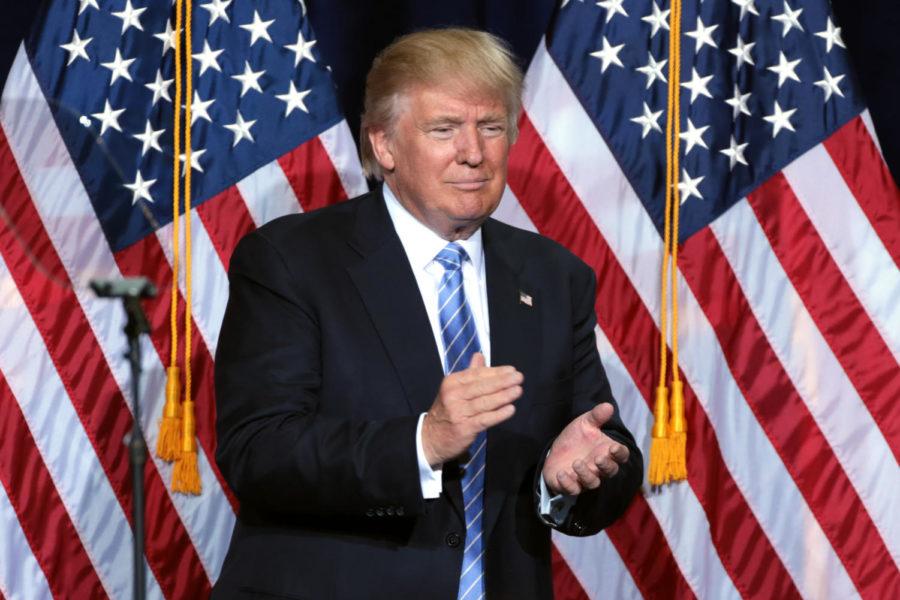Trump approval rating remains steady through presidency
President Donald Trump speaks to supporters at an immigration policy speech in January 2019 at the Phoenix Convention Center in Phoenix, Arizona.
October 13, 2019
Since President Donald Trump was elected in 2016, he has maintained a steady approval rating.
In every Gallup poll conducted since the beginning of his presidency, Trump’s approval rating has never gone higher than 46 percent and never lower than 35 percent. Past presidents such as George W. Bush or Harry S. Truman have had tremendous increases or decreases in their presidency approval ratings. Truman alone fluctuated between 87 percent and 33 percent approval in his eight years of office.
Mack Shelley, Iowa State professor and chair of the political science department, said the reason Trump’s approval numbers are so steady is because he has been underwater all of his presidency.
“Trump hasn’t tried very hard to reach out on his electoral base,” Shelley said.
President Trump’s base is fundamentally conservative, whiter and more male than the country as a whole, but also includes some females and those from small towns and rural areas, Shelley said.
A possible reason why Trump’s approval ratings are so constant is that the Republican Party’s singular focus for winning elections is maintaining its base, Shelley said.
“If [they] hold onto their base and attract a little beyond that, [they] will probably be okay and be able to win the electoral votes in the 2020 presidential race,” Shelley said.
Trump has not done anything significant in his presidency so far that would cause him to lose approval or gain approval, Shelley said.
Unlike former presidents such as Truman, nothing monumental has occurred during Trump’s presidency. Truman lost a great deal of his support in the polls because of the Employment Act of 1946, which he signed after WWII.
“Polling has a very short shelf-life, like a fish; every poll is only relevant at the moment it’s taken and reported,” said Steffen Schmidt, professor of political science.
Things can happen that would change the answers people polled in a matter of an hour or even a day.
“Polling also relies heavily on the economy, so if the economy would suddenly go ‘south’ that would hurt President Trump’s approval,” Schmidt said. “Or if the economy suddenly grew — with lots of jobs, consumer confidence, wage increases, etc. — then that would be very good for President Trump’s poll numbers.”
Many polls are taken daily; however, it is crucial to pay attention to the date it was taken, the sample size and the margin of error. Every good poll will always tell its audience, the sample size along with the margin of error recorded.
Although there may be some error to approval ratings, it is important to still be aware of the polls, said Kelly Shaw, senior lecturer of political science.
“It’s important that people know, [it is] important that people pay attention to popularity and how popular a president is or how unpopular; it shows job performance and the perception of president and his ability to lead the country,” Shaw said.
Most presidents have a core base that will always stay with them no matter what they do, Shaw said.
President Richard Nixon resigned from office with an approval rating above 20 percent, despite near certain impeachment and removal by Congress.
“Almost all Presidents have a core that will always stay behind them no matter what,” Shaw said.

















